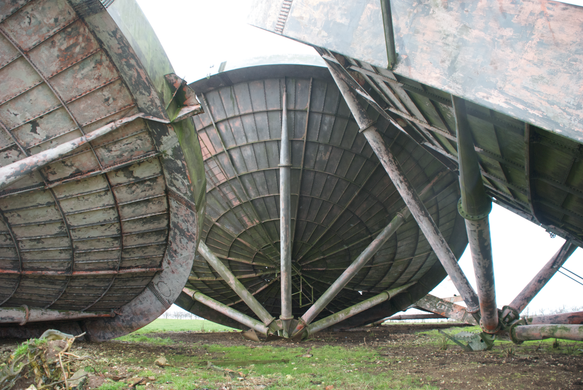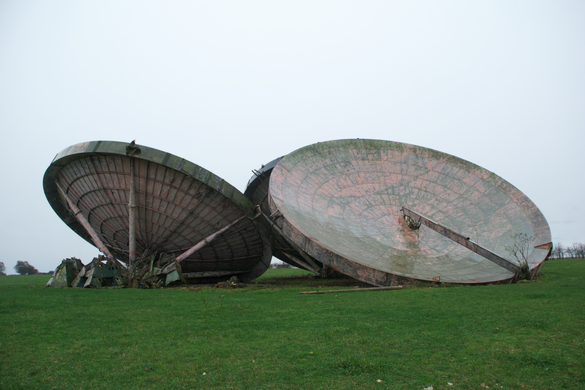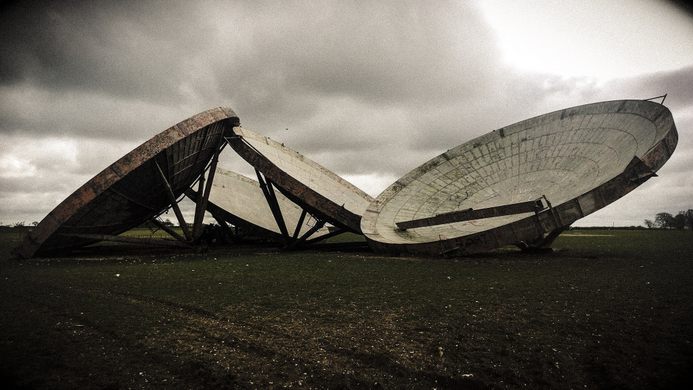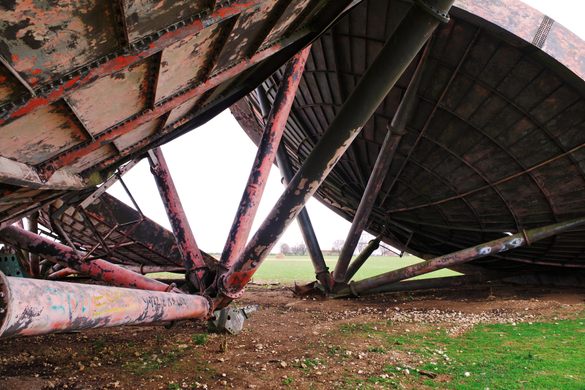AO Edited
RAF Stenigot
A quartet of rusting satellite goliaths are all that remain of a communication network that protected Britain from German and Russian air strikes.
A Royal Air Force Radar Station in operation between 1938 and 1955, RAF Stenigot was a vital piece of a communications network that detected German attacks during World War II and deterred Soviet air strikes in the years following. But today the disused dishes simply rust away as enormous relics of wars gone by.
Originally built in 1938 as part of the “Chain Home” network, the station did not initially feature large dishes. In the beginning the site’s main feature was an octet of aerial towers, four for receiving and four for transmitting. These were supported by some low-lying buildings and stood on large concrete pads. This initial installation was in place to detect and help intercept German air raids.
Once WWII ended, the site was retooled to serve as a NATO-run early warning station to warn of Soviet airstrikes. To this end, four huge, 60-foot-wide parabolic dishes were installed, replacing the towers. This new network carried the jaunty name, “ACE High,” standing for “Allied Command Europe.” While this newer version of the station performed well, the whole site was decommissioned in the 1980s, and by 1996 the entire station was all but dismantled.
Despite being decommissioned and taken down, some features still remain. The thick concrete pads that once supported the heavy aerial towers are still visible at the site as well as some of the original buildings, including a pillbox and guardhouse. One of the radar towers is also still standing and features a memorial at the top. The most impressive relics are the four parabolic dishes that have been taken down from their mountings and are simply rusting away in a field nearby. The site is managed by the Ministry of Defense, but the massive dishes can still be visited.
Update as of May 2019: Three of four dishes on-site were dismantled in 2018. There is currently only one dish remaining.
Update as of March 2021: No dishes remain on site. All that is left are a few supporting beams.
Know Before You Go
The entrance gates are locked but access is possible by following the main road to the west of the sit. A few hundred meters further on is a public footpath which runs across a field. You can get to the dish from that path.

































Follow us on Twitter to get the latest on the world's hidden wonders.
Like us on Facebook to get the latest on the world's hidden wonders.
Follow us on Twitter Like us on Facebook